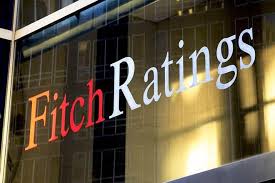Fitch Ratings, one of the world’s leading ratings agencies, has revised down its 2021 global GDP growth from 6.3% predicted in June to 6.0% by the end of the year as disruptions to supply chains amid growing demand continue to characterize the global economic space.
In its press statement issued on Global Economic Outlook (GEO) onThursday, the agency noted that ongoing global economic recovery was still proceeding rapidly but already hitting speed limits,
According to the firm, an unprecedented boom in consumer demand for durable goods has stretched the capacity of global suppliers even as supply bottlenecks are curbing the rate of output expansion and creating near-term inflationary pressures.
Commenting on the ratings firm’s findings, its Chief Economist, Brian Coulton, said: “These pressures should ease significantly in 2022 as demand growth moderates and supply responds. But price pressures are shifting the tone of the policy debate. Fiscal and monetary policy support for growth will start to wane next year.”
Based on the latest trends of the global economic system, Fitch now expects world GDP to grow by 6.0% in 2021, revised down from 6.3% in the June
As supply constraints are limiting the pace of recovery, and Fitch has revised down the US 2021 GDP forecast to 6.2% from 6.8% in June, it stated that a greater share of demand growth is being reflected in price increases and US inflation forecasts have been revised up again.
Fitch has also lowered China’s forecast, to 8.1% from 8.4%, as the property slowdown weighs on domestic demand. Forecasts for some other Asian economies have also been revised down following a pick-up in coronavirus cases and renewed restrictions.
However, the rating agency also revised up eurozone 2021 growth to 5.2% from 5.0%. Poland, Turkey, Mexico, Russia and South Africa have also seen forecast upgrades. Progress with vaccine rollout is limiting the impact of renewed increases in Covid-19 cases on economic activity in Europe and the US. But virus dynamics are influencing growth more heavily where vaccination rates remain lower. The pandemic is still constraining labour supply.
The ratings firm further clarified: “The boom in demand for consumer durable goods has been so strong that supply was unable to keep pace. Semiconductors are a key bottleneck. Supplier delays for US manufacturers have reached levels last seen in the 1970s. Car production has been affected by component shortages. Goods scarcities look likely to persist well into 2022.
“Near-term inflation pressures have intensified. The cost of processed inputs for US firms is rising at its fastest rate for 40 years. Higher costs have been passed onto consumers, with US core CPI inflation at its highest rate since the early 1990s.
“Goods price inflation should recede next year, but gradually rising US services inflation will prevent US core inflation falling below 3% by end-2022. Inflation pressures are less intense in other advanced economies, but end-2021 CPI forecasts have been revised up widely. Inflation pressures are influencing the policy debate. Fed tapering is expected to commence in November 2021 and we now anticipate two Fed hikes in 2023.
“The Bank of England is also now expected to hike rates in 2023 and emerging-market (EM) monetary policy has seen a rapid about-turn. Peak global fiscal stimulus is behind us. Furlough schemes in Europe are being unwound. Deleveraging dynamics in the property sector are weighing on China’s recovery
Macro policy is starting to be recalibrated but slower housing activity will take a toll on domestic demand and global commodity markets. Challenges to the EM growth outlook for 2022 are starting to build”, Fitch added.






